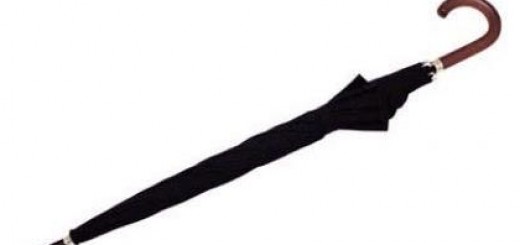i have not been training for a long time, but from the beginning I have and still get confused by instructions such as “be careful on this shoulder joint, you may cause injury” and not a three minutes later, a drill where you pretend to stomp on your partner’s face. I’ve been thinking about this confusion and figured out that there are several levels of intent going on here.
The first level - training, playfighting, martial art for a sake of beauty and pleasure. About the same category as ballet (boring), gymnastics (better) and badminton (fun). This is most of the training that I have been receiving.
The second level – restraint and control. That’s where I would like to spend most of my time, because that’s where these people are: the drunk guy in the same subway car, a male date getting a little too friendly too soon, a neighbour next door having a domestic dispute that is getting rowdy. Most of my neighbours are sweet and tiny Phillipino people though, so I guess I can cross this one out. :). I am a smaller woman, so a stick in my hand would come in much desired here and I would like to learn how to use it well!
The third level - self-defense – damage to the point of the attacker not being able to do much for some period of time. I would put a guy rudely asking for my wallet or taking off with my laptop in this one. See some fight stoppers here.
The fourth level - going for the kill. I sure pray to God to never ever come across someone who needs to be destroyed ASAP. The scenarios are too scary to even put here – your life or your child’s life against theirs.
I think the training for each of this intent levels should be taught on different days or may be even different months (or different years?) and equally, or at least make the student aware that you are only teaching on one or two planes. Then the women that show up for self-defense training don’t get bored playfighting and the people who want to stick their fingers in someone’s eyes will get a chance eventually too. Then when the situation arises, you hopefully will automatically move to that mode of functioning and use the tools that are appropriate – not too subtle, not too strong.
What do you think?





I really appreciate reading this article. It especially hits home, being written from a woman’s point of view.
The situation is not unlike going to university — Do you want a broad education and be exposed to many points of view? Or do you want the skills to get the job to make the money right away? Each are important, but for different purposes. And these can change over time. Sometimes it’s about going back to learn what one didn’t get around to appreciating fully earlier.
I like this one :-). The young BJJ guy is helping to test the skills of two police officers. The police are trying to “restrain and control” him, without beating him up. Look how long it takes! And all three of them are trained, so it’s not like the BJJ guy has a special advantage here.
http://www.youtube.com/watch?v=HncwGDTNsxo&t=1m5s
On the other hand, people die sometimes through freak accidents in fights or physical struggles, ie. by mistake. I remember reading about someone who died from being shoved out of a bar in Victoria, BC. He hit his head on the edge of a street curb, and that was it.
But it’s very seldom where someone can be “restrained and controlled” by mistake. So, I think the “restrain and control” level is harder physically to do. Killing someone is harder psychologically to do, especially if you’re a thoroughly kind and open hearted person, and don’t have access to one’s “kill” switch. Not a nice topic, but certainly something for martial artists to think about… exploring the shadow side of one’s human nature.
These levels are organized by level of violence, which makes good sense. But, if they were re-ordered by level of physical skill required, then level 2 would be the “highest” level, then 4, then 1 or 3 as the lowest, depending on the situation. Thoughts?
Really? I thought by the level of skill they went in the opposite direction. Such as to kill somebody you have to have a knife and not afraid to use it. Happens all the time. A teenage girl killed somebody in Peachland, for example. Also may be for a smaller woman the level 2 is difficult, but for a bigger guy don’t they just have to punch somebody hard enough?
This subject is actually quite an intensely deep and personal subject for me. Primarily in the sense of tackling the darker side of the mind and practice of “martial arts”. I have begun to write two separate books on the subject, one from the philosophical standpoint and the other from the perspective of the darker personality itself. To steal a quote, in some cases: “I would rather be judged by twelve than carried by six.”
I firmly believe that training needs to start and end with an ethical ideal, combined with practical application, as well as, a fundamental and growing awareness of every situation. Though I do concur that “looking into the abyss” can be a dangerous practice, I have personally experienced a better insight into myself by seeking to observe the depths to which I could find myself, and from that… experienced the countering power of optimism and potential that allows for the unfoldment of peaceful resolution to any life situation. Now this is of course looking at things from the unique perspective that I don’t consider my own physical survival as important as my spiritual survival.
I believe that it is often the case, when one person kills another such as the knifing in Peachland, that it has little to do with any training but is more the complete LACK of self-control, leading to a point of Temporary Insanity… which creates the tragedies such as that.
To address the practical, I heartily agree with Ðørsun that the restraint is the harder ability to learn and master – But the most essential. I can appreciate Natalia’s four scales, I agree that the violence levels are accurate 1-4, but that Ðørsun’s analysis for skill is good, I would say 2-4-3-1 seems hardest to easiest by my estimate.
I think as Natalia says, that its important to divide the training over the course of months or sometimes years, however at some point it all needs to come together with the kind of strictness in training which only time and practice can make possible to achieve.